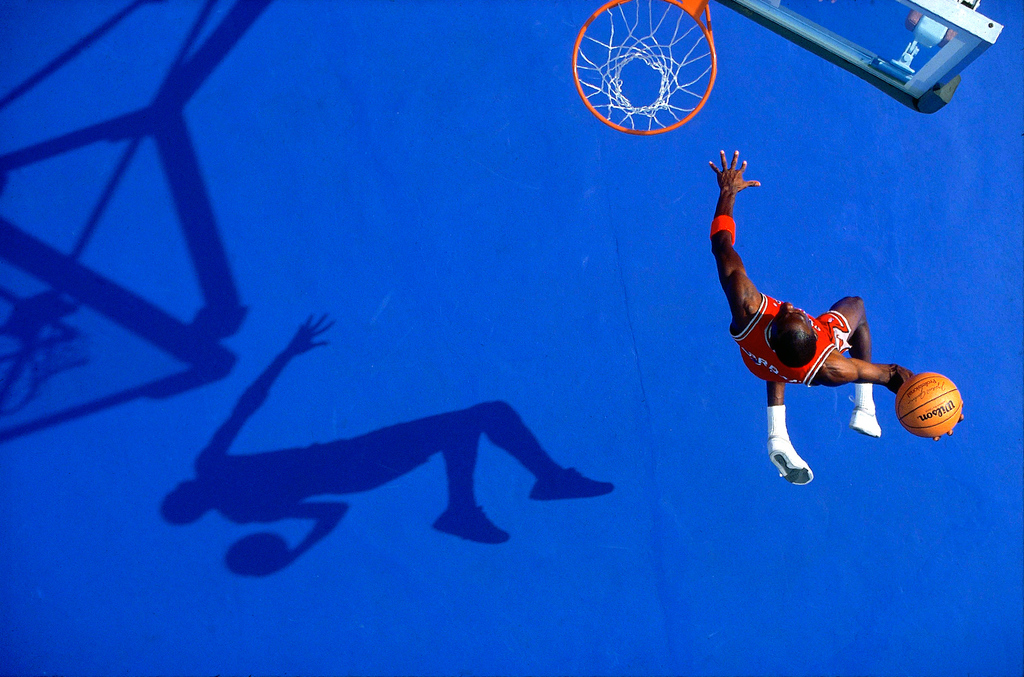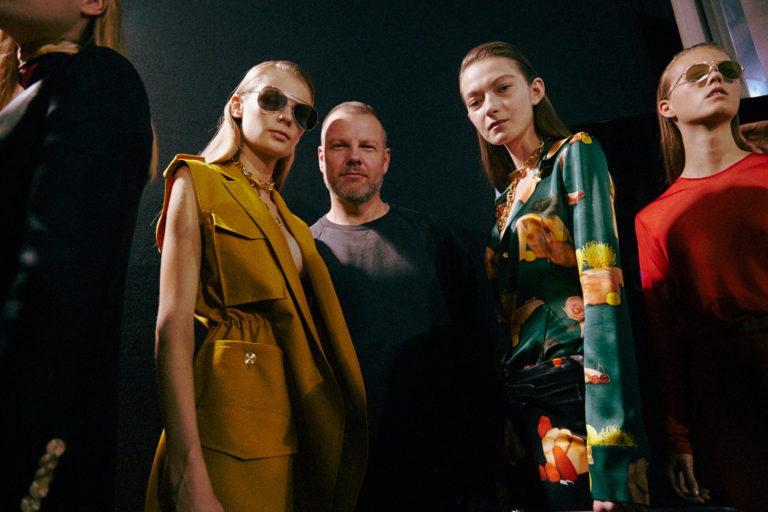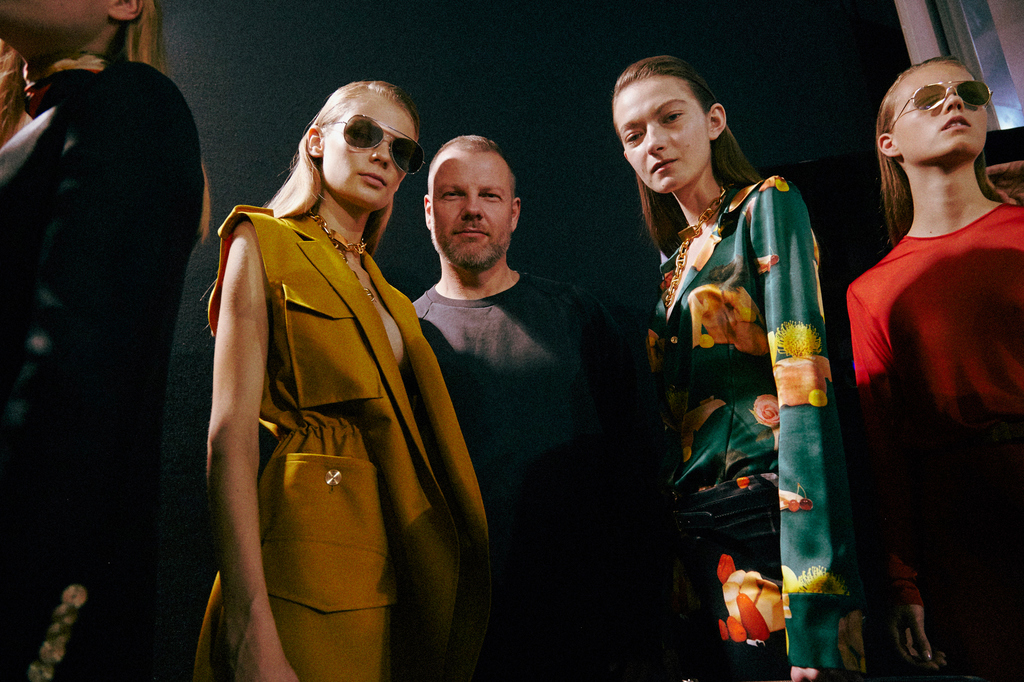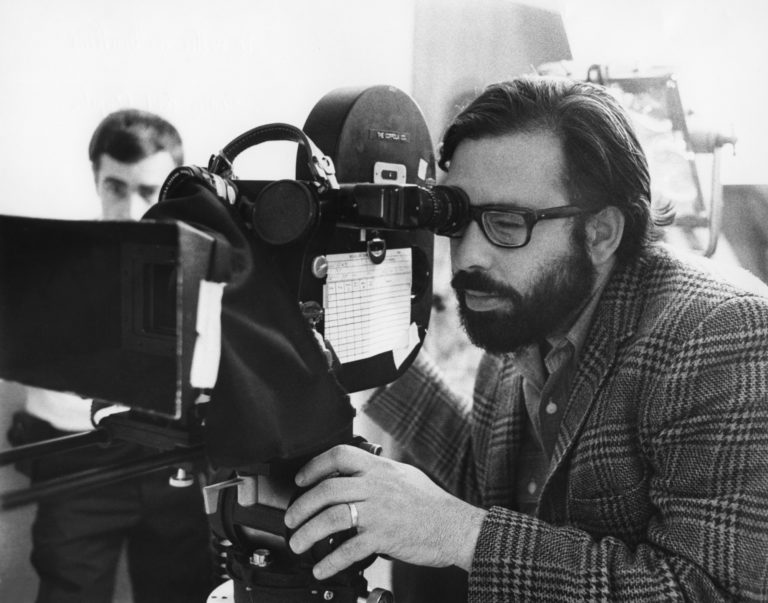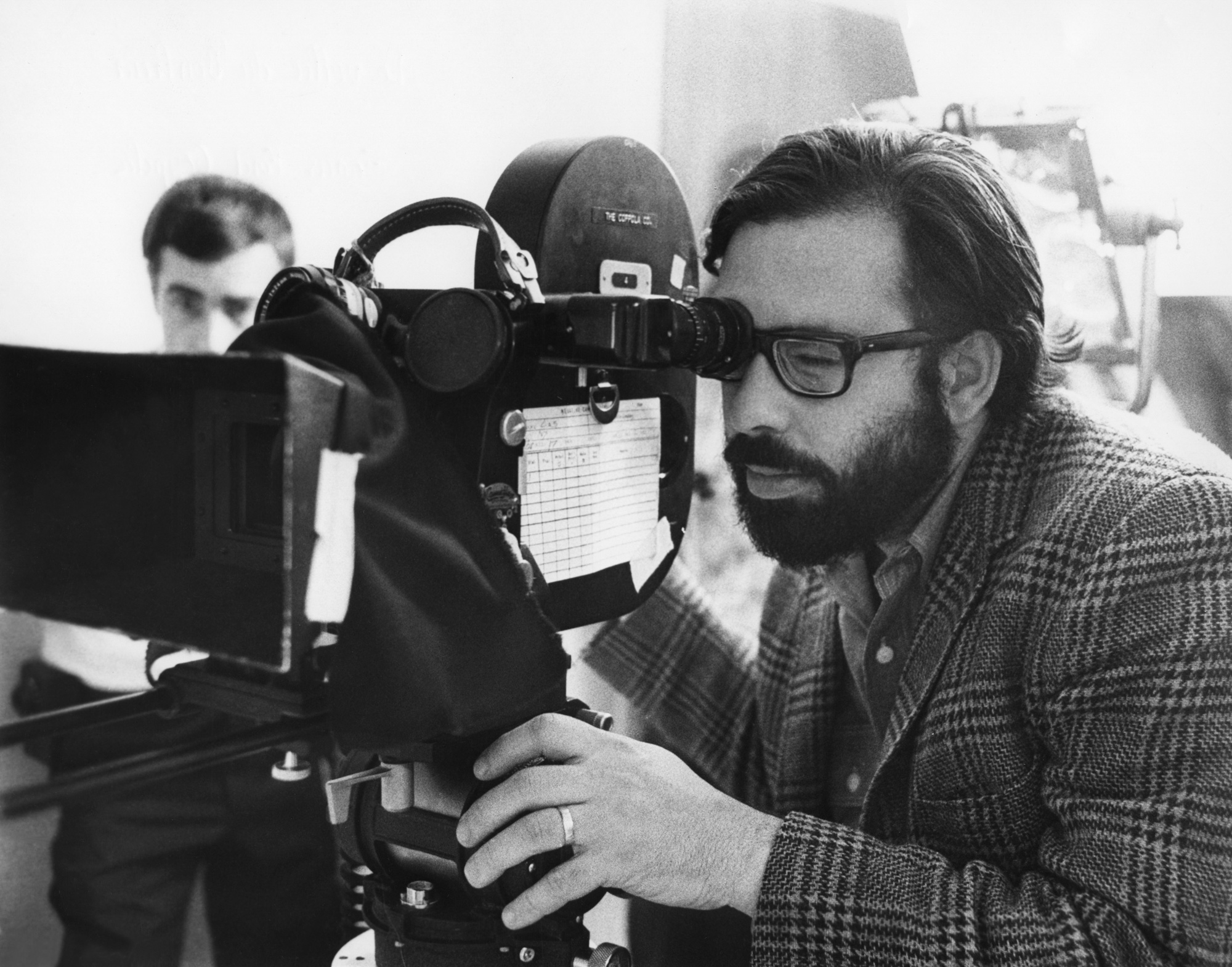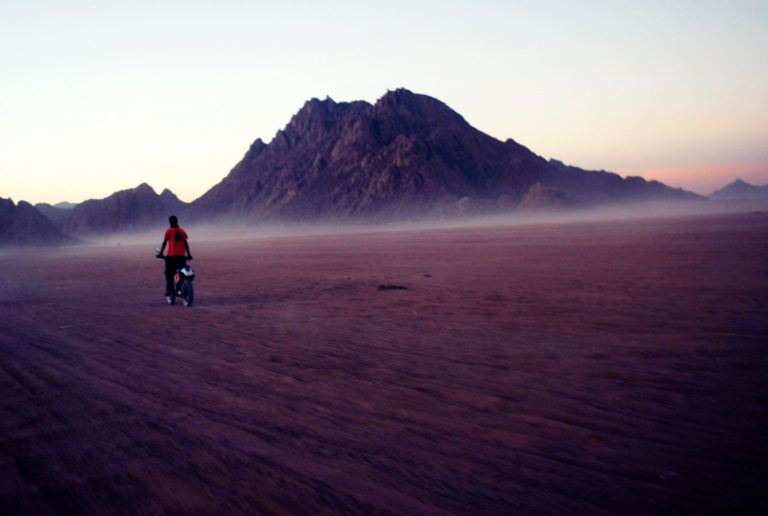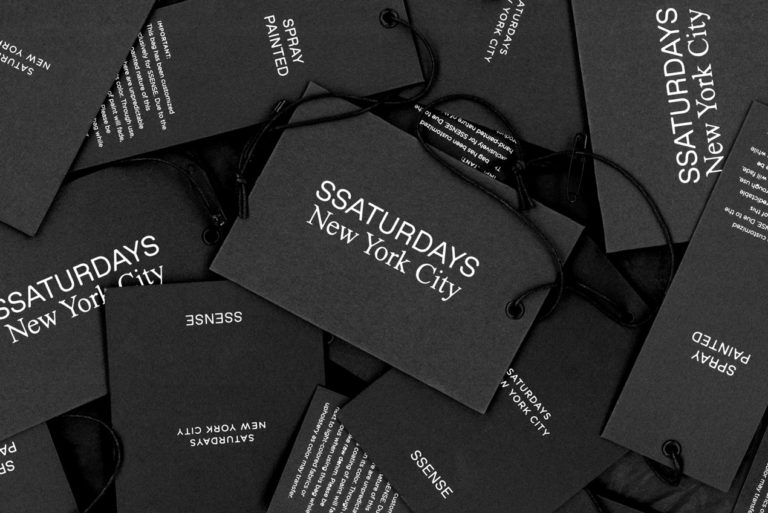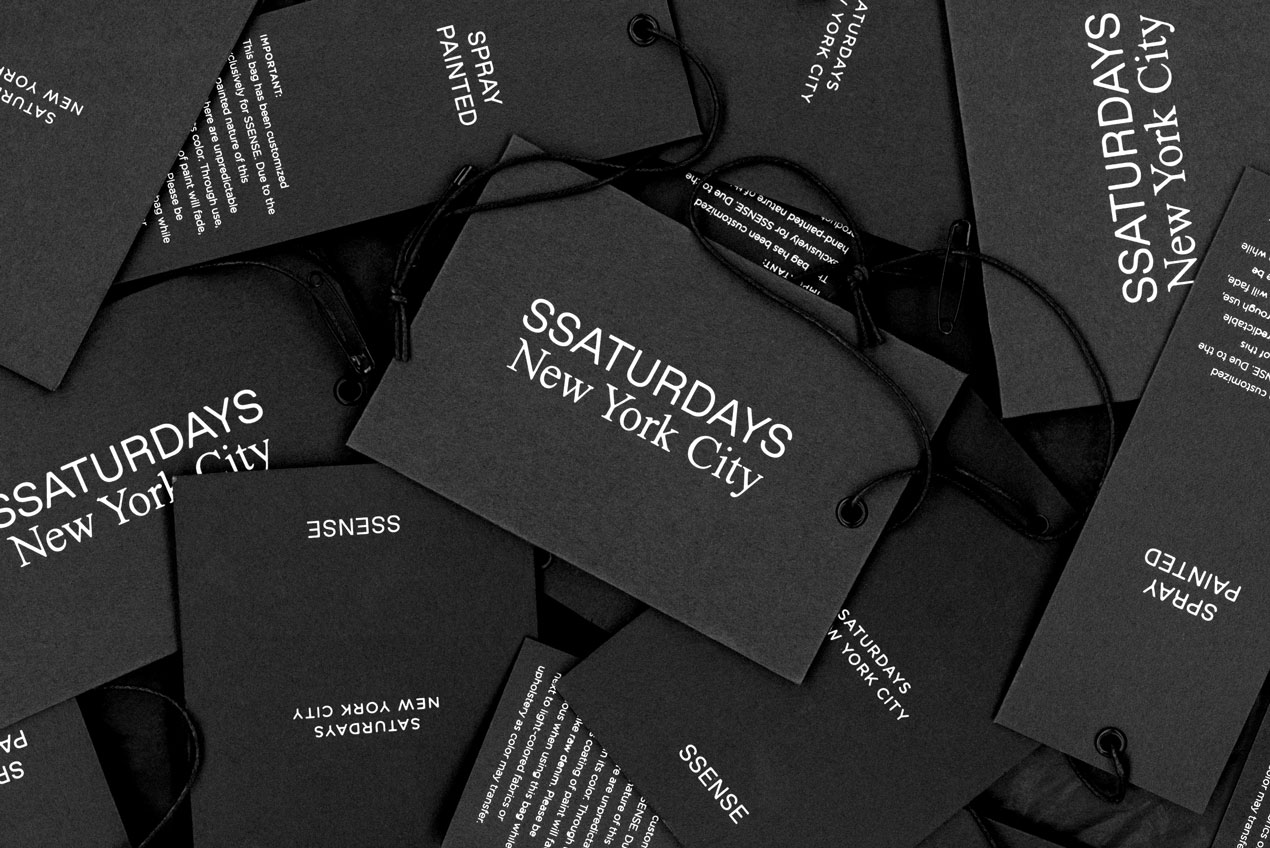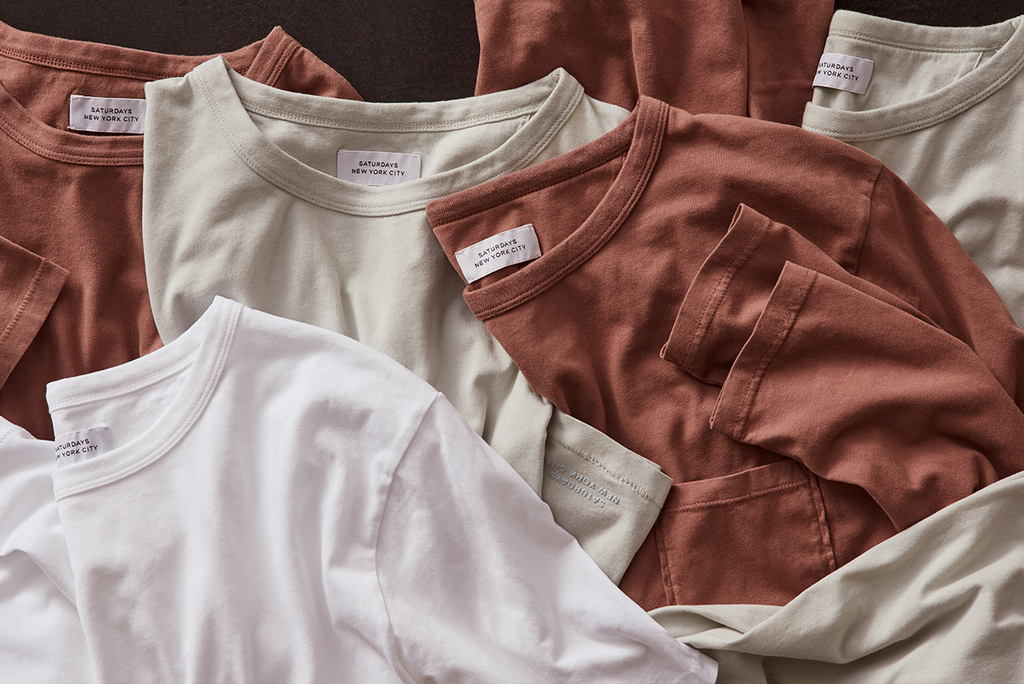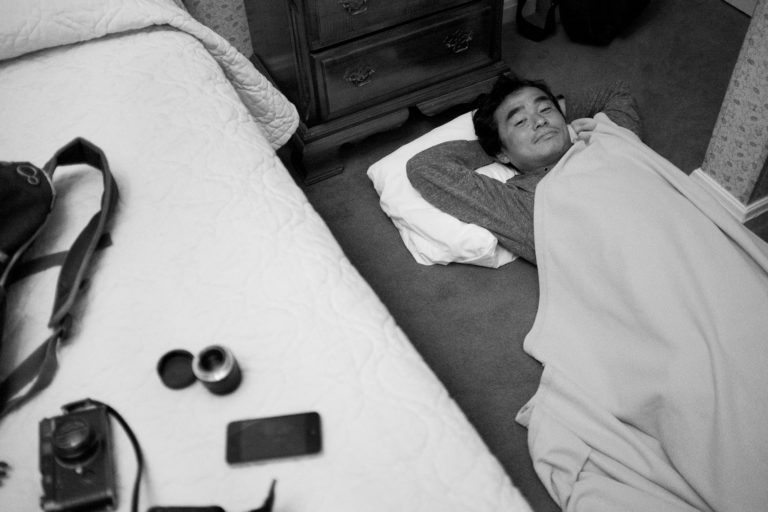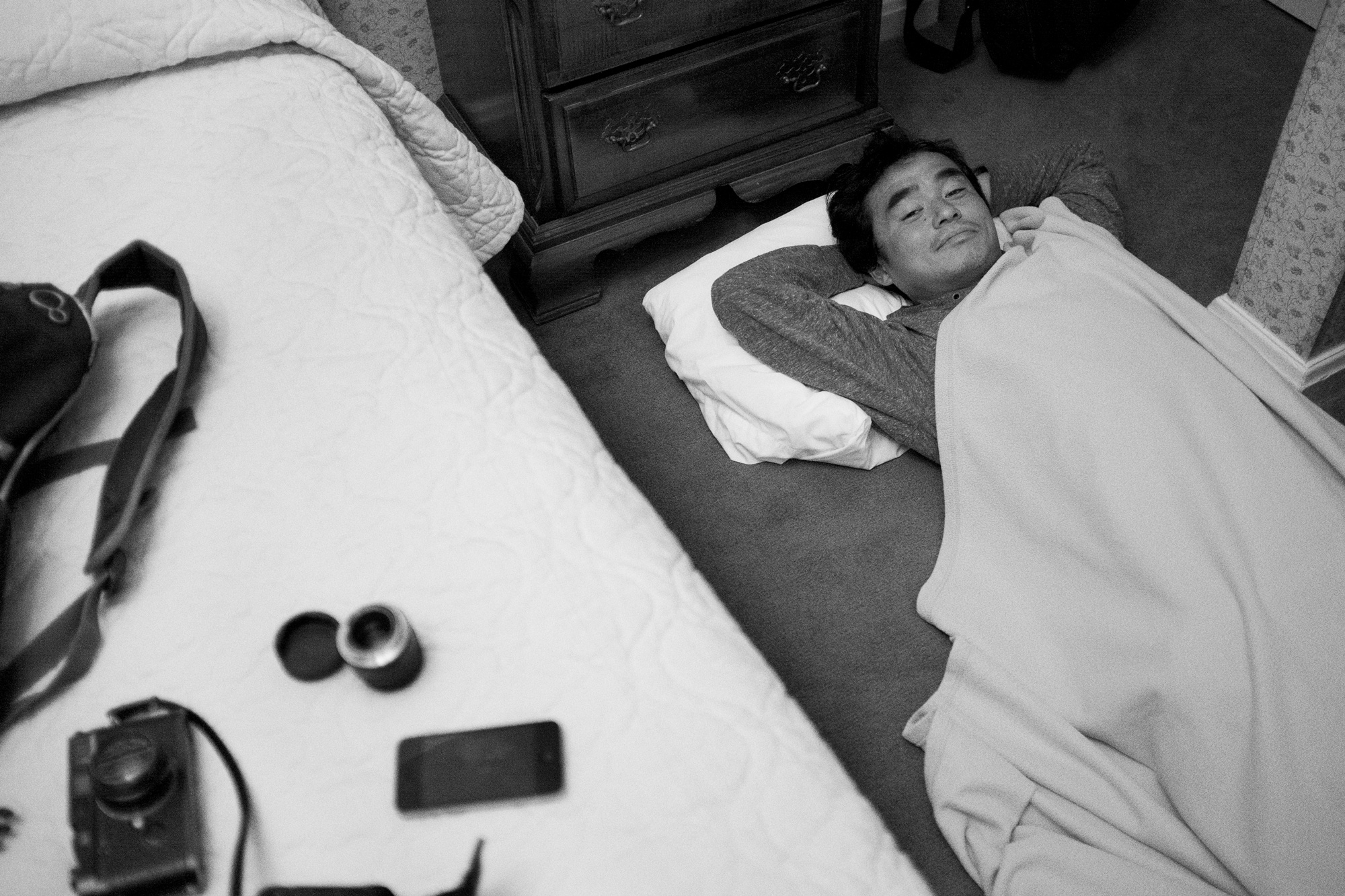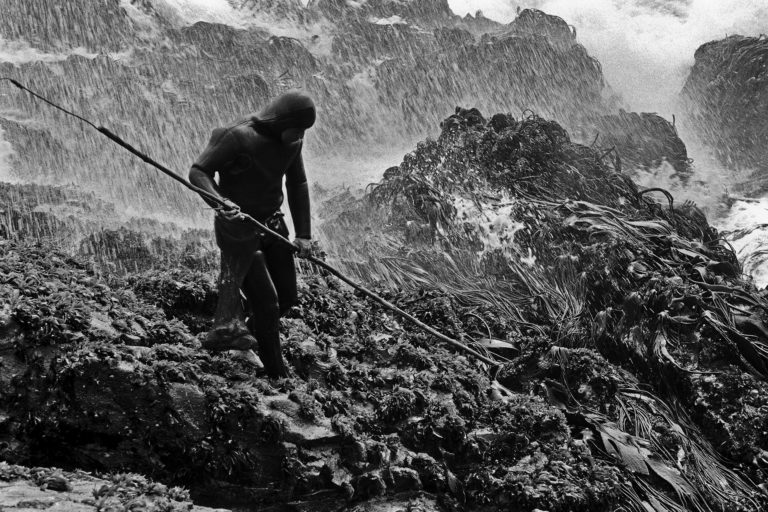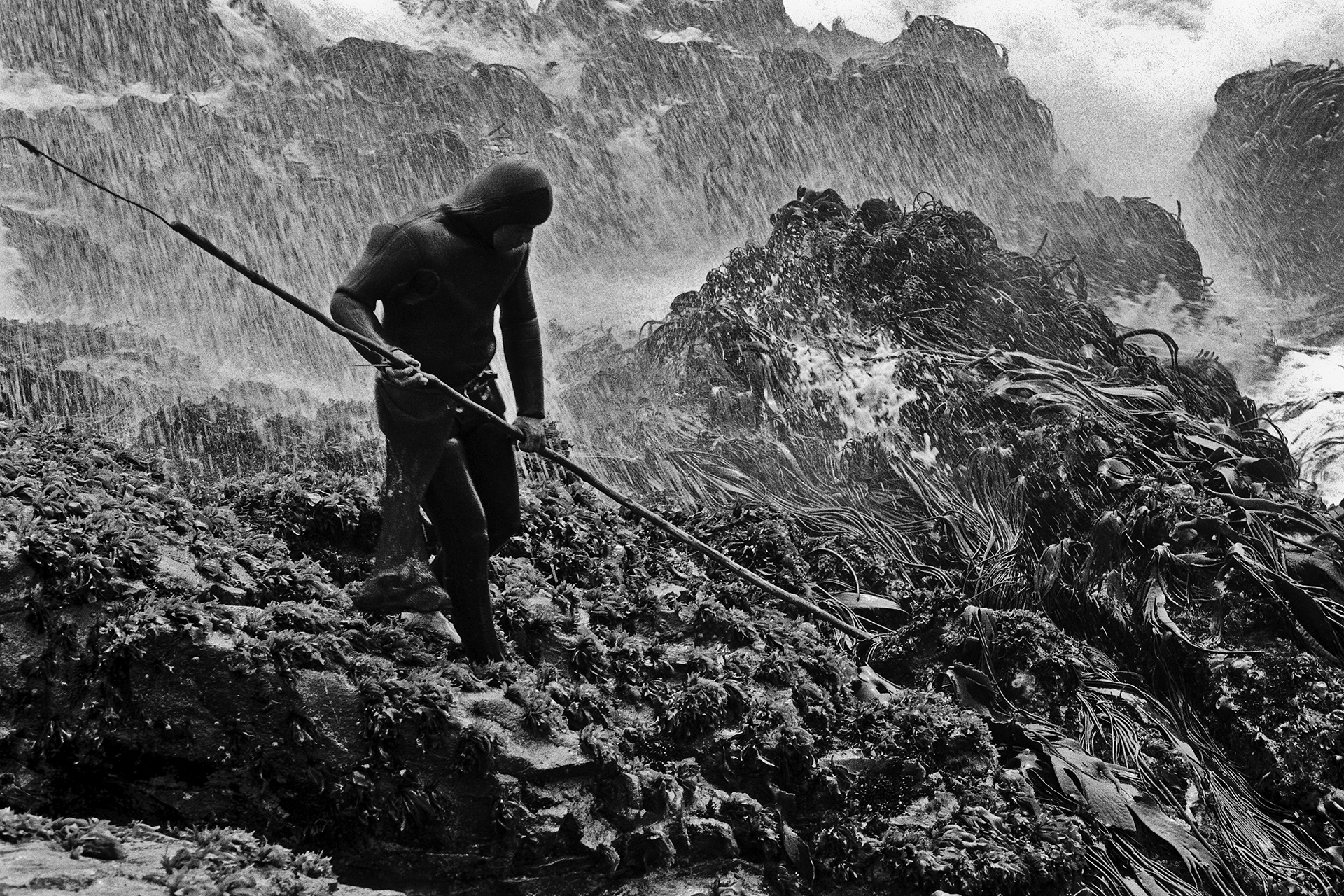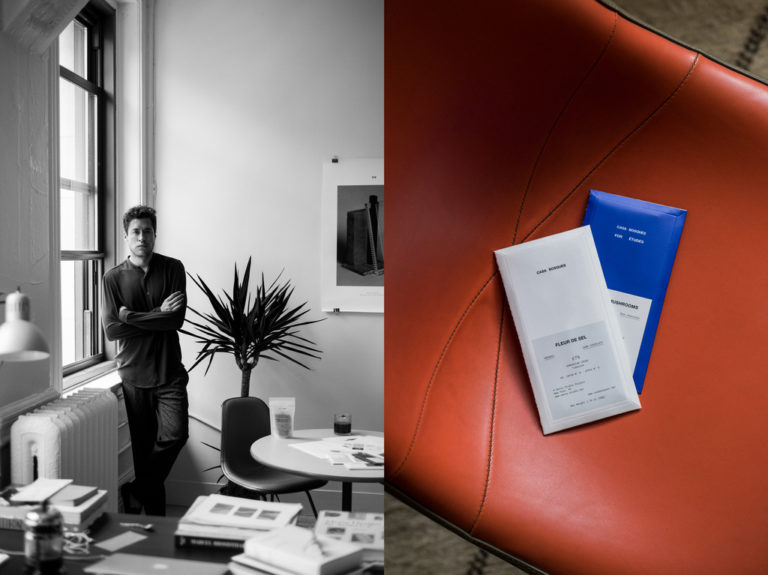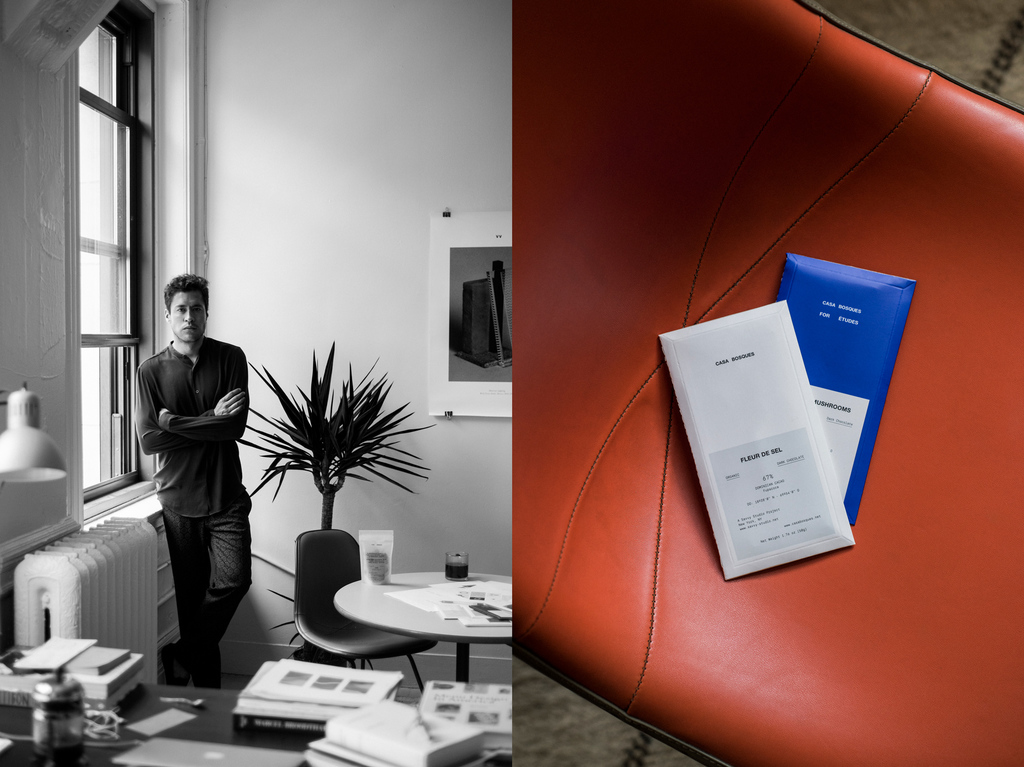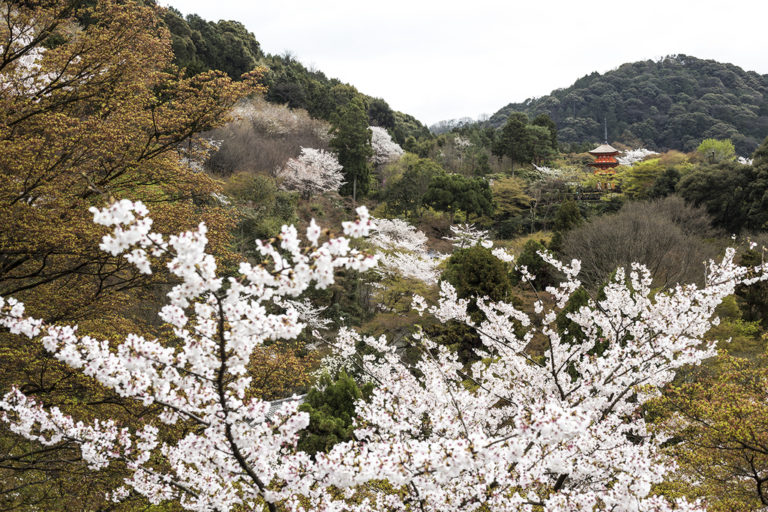colin tunstall: Do you remember when you started taking photos?
walter iooss: Let me get the exact date of the football game here. November, 1959. Back then, I was a sophomore in high school.
ct: How did things progress from there?
wi: I kept shooting with my dad. We’d go to Madison Square Garden. We’d go to the Knicks games and the Jets games. I started going to Yankee Stadium and I’d go to Philadelphia to shoot the Phillies. I’d also shoot my friends playing ball. I took a fundamentals course in photography my junior year and senior year of high school. Then, I went to the Germain School of Photography in New York.
ct: I have never heard of that.
wi: Who the hell has? It was downtown. Obviously I loved it because I gave up playing baseball, which was my life. And then the next summer I called Sports Illustrated and told them that I had a portfolio. I was just a street-smart aggressive New Yorker. I remember his first question was, “You don’t have any nudes in it, do you?” I mean, I’m sure he knew he was talking to a teenager. And then he said, “Come on in, I’ll take a look at it.” So I went in after school.
ct: So this was the early ‘60s?
wi: It had to be 1961.
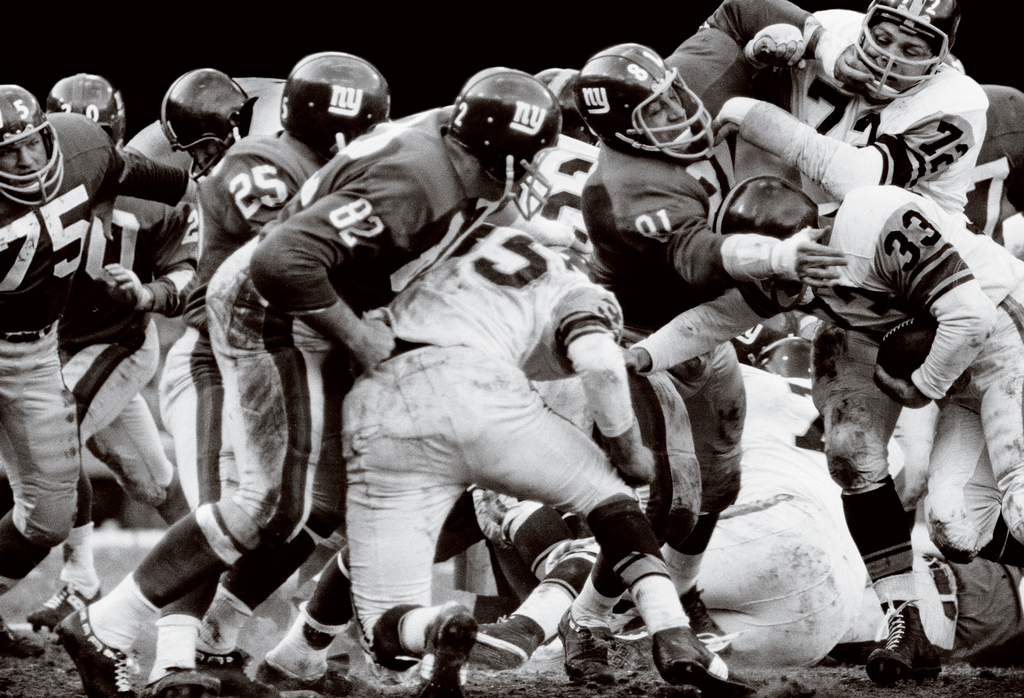
Steelers vs. Giants, NY, 1963
ct: At that time, Sports Illustrated was a very big publication, right?
wi: Oh yeah. There was that and Sport Magazine at that time. And the editor, he started to give me spec assignments. He’d say, “Have your dad drive you to Philly, photograph Ernie Max and I’ll give you the film and we’ll process the film and let’s see what you can do.” Then they gave me an assignment in July of 1961. I had just graduated from high school, and they wanted me to photograph an 86-year-old sailor in Connecticut. I was sixteen. Can you imagine what this 86-year-old sailor thought? They are sending Sports Illustrated there, after all. My father is driving a teenager up there to photograph him. And this guy built a sailboat without plans and sailed from Boston to Florida and back. You talk about being nervous. He rowed me out in a rowboat and I started getting nauseous. My cameras were wrapping around my neck. I think I shot one roll of film and that was it. That was the beginning of my career. And then I started working for Sport Magazine. By 1963, I was working full time.
ct: Were you focused on anything specific to have yourself stand out?
wi: I would just shoot the games. Or sometimes you were assigned one player and spent your whole day watching him—you didn’t even see the game.
ct: Because a lot of the work seems very graphic. For instance, that shot with the scoreboard in the background.
wi: Well, not every venue gives you that chance. I started to visually notice, as I got a little older, that the backgrounds were as important as what you place in the foreground. So, you start to incorporate the entire frame. Just because you go to a game, that doesn’t make your picture interesting. Sometimes you make a picture interesting by what’s framed around the person. That was just part of the learning curve.
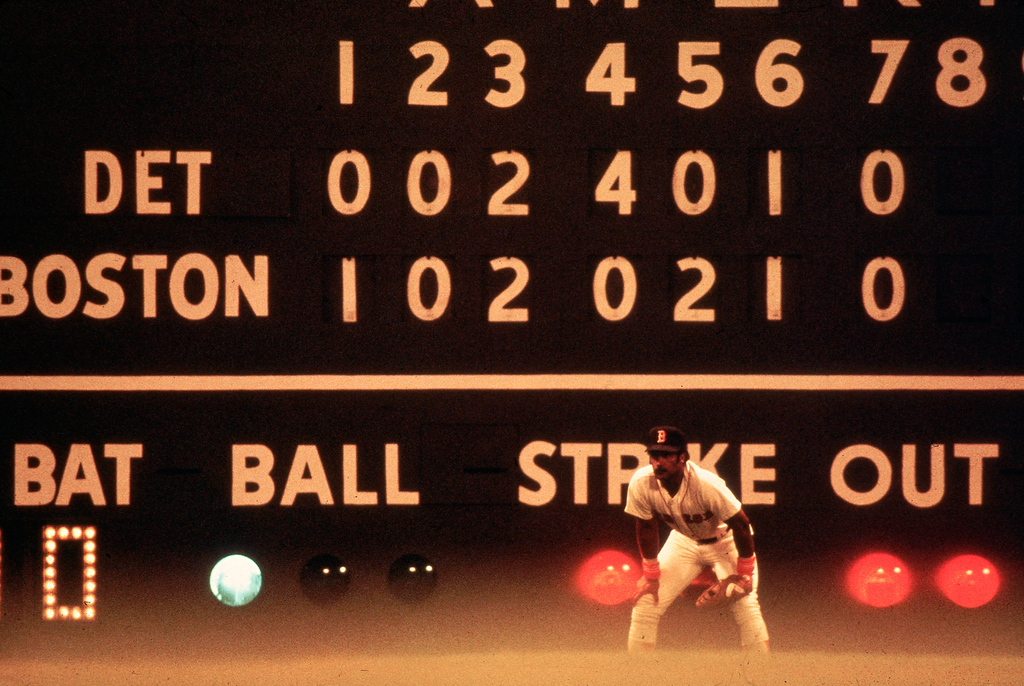
Jim Rice, Boston, MA, 1979
ct: And even with the photos of the Knicks.
wi: Oh, the Willis Reed picture?
ct: Yeah. With the long lens. You really got into the middle of the action.
wi: Well, that one was using daylight. The tonality of that picture was using daylight color film in an arena where you should have used tungsten. The tungsten would have made that very cool, but the color film gave it a beautiful, almost heavenly light.
ct: How did you get into surfing photography?
wi: It started because I had gone to Kauai. I wasn’t a surfer by any means, but I loved Kauai. I had gone there—I think 1972 was my first trip—and I would work for six weeks for this resort. I would photograph the golf course, the holes, aerials of the place. Anyway, I met this helicopter pilot who was—he was like Ginger Rogers or Fred Astaire at the helm. We’d fly all over the place. The helicopter was free. I had unlimited freedom with that helicopter. He just billed the company. And after doing this for a few years, I started to see the surfing scene up there and these massive waves. So I figured it was a good way to get a six-week trip out of it. It was going to be a three-or-four-week trip but it was raining so we couldn’t shoot. And that’s really the beginning of my surf photography.
ct: Is it true that you’re not able to get those close aerial images anymore?
wi: It’s the FAA—nobody’s allowed in. I think the limit is a 1,000, or 1,500 feet. You know, it was like hot-dogging in the ‘60s or ‘70s. There were really no rules. It was a renegade state. The locals did what they wanted. And then in Hanelei we would just do whatever we wanted. He’d land the chopper anywhere. He used to land at a bar, The Dolphin. He’d have a drink and we’d go back out. He was a magical pilot. So you were able to do things that nobody else could do. Really no one else could afford it—renting a chopper for two hours.
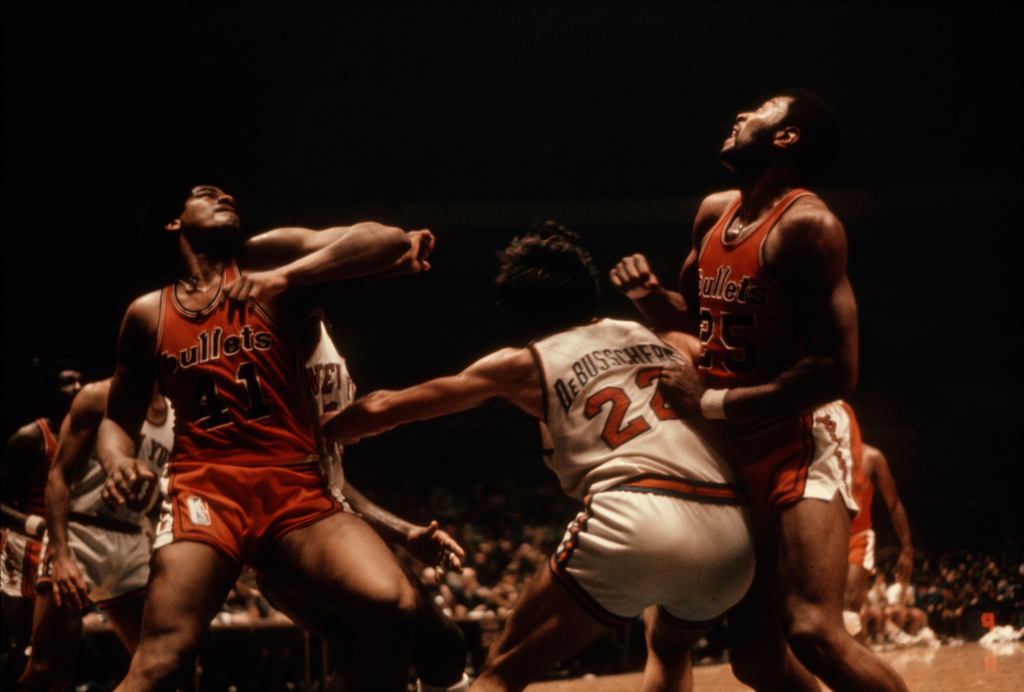
Unseld, Debussure, and Johnson, NY, 1968

Hanalei Bay, Kauai, HI, 1975
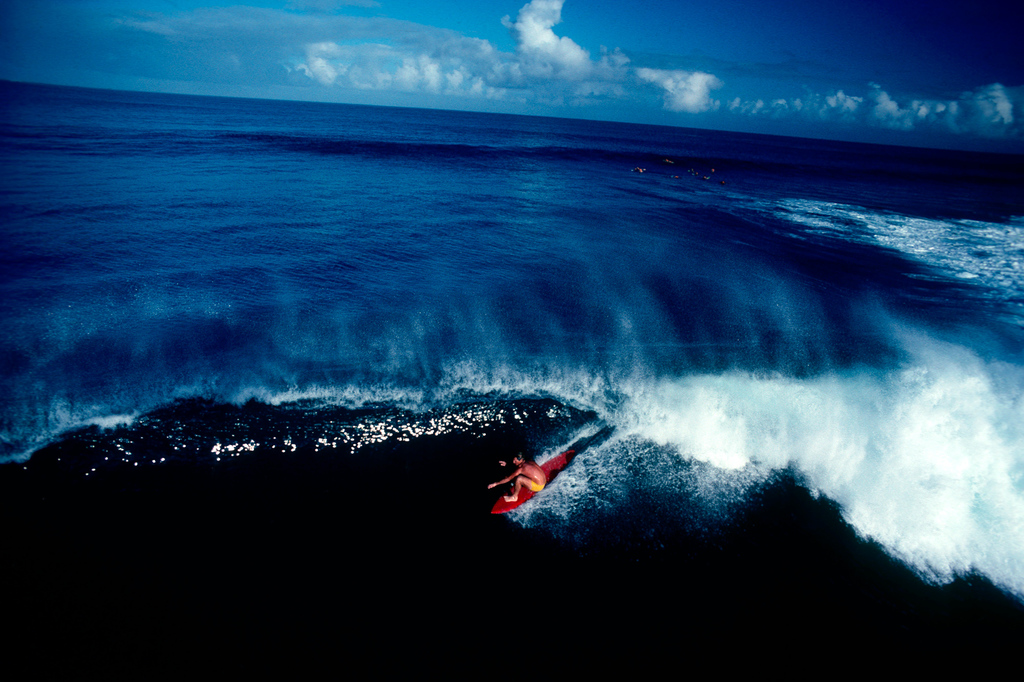
Hanalei Bay, Kauai, HI, 1975
ct: So it just happened to be the perfect timing?
wi: Yeah. It was perfect. That was—I didn’t take another surf picture for years until I moved to Montauk for the first time in 1977. I always loved the ocean. I tried to be Jacques Cousteau. I tried to surf once in New Jersey. I have this picture of
myself with this longboard, but nobody’s teaching me so I just got pounded in the shorebreak with my 50-pound board. Then I bought a rubber raft and I started taking waves on our rubber raft, plus boogie boards and longboards.
ct: All in Montauk?
wi: All in Montauk. And then in 1990 I shot Pipeline from a chopper again with the fill flash, which is that shot of Pipeline.
ct: How did that come about?
wi: I had a bar made and I put five Canon on-board flashes that you would normally put on top of a camera, and telescoped them all. I just had my assistant aim them at the waves and get as low as we could in twilight and fill in the light.
ct: It’s a pretty amazing image.
wi: It’s a good one. And once again, that was the first fill flash I had seen in surfing. I couldn’t rival the guys who shot from the water. I’d be dead. So I had to come up with something that would be unique for me.
ct: And you have that wonderful picture of Kelly Slater. That was in Florida?
wi: The one in the whitewater? Yeah. He’s on Instagram, too. He identified that picture right away. He knew what year it was right away. He’s a smart cookie. That was taken the year he graduated from high school at the Sebastian Inlet.
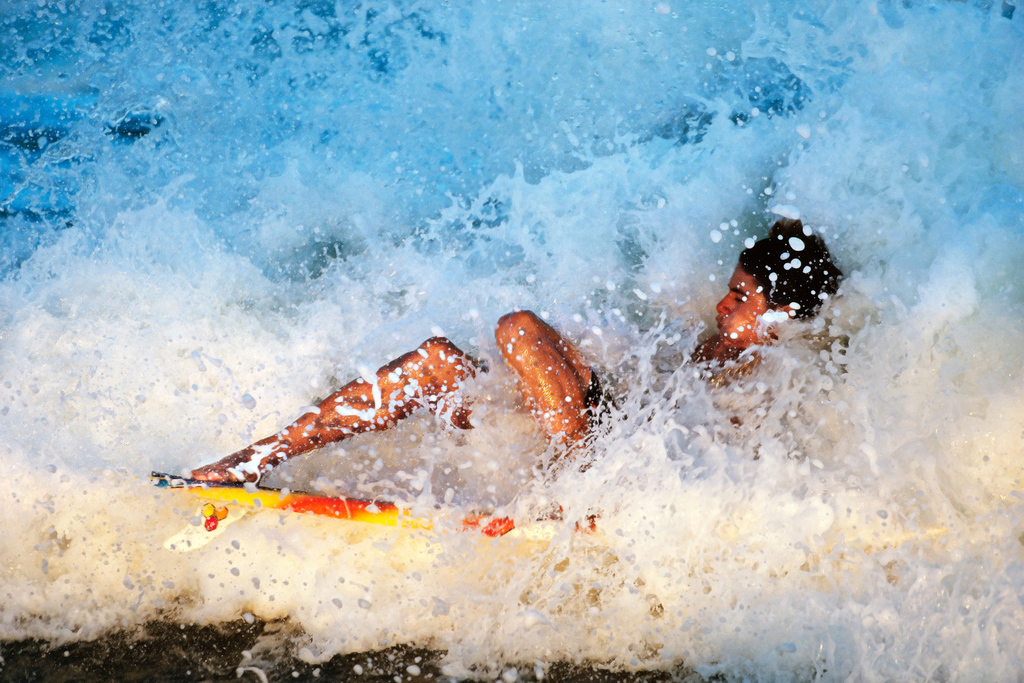
Kelly Slater, Sebastian Inlet, FL, 1991
ct: Your body of work is truly massive. I really love that image of the big guy with the Florida State Seminoles hat in the crowd.
wi: My fan essay.
ct: Can you tell me about the concept for that and how it happened?
wi: I think it was 1980. I started seeing the evolution of fans once Monday Night Football became a spectacle. Fans changed. The whole world with fans got a little more extreme. So I thought, let’s do a fan story. So we’d go from the obvious— baseball, football, and basketball—to croquet, to Palm Beach cricket, to dog racing. There are just bizarre fans everywhere. So I went to the Orange Bowl, which was played out in Miami and I continued this fan story. All you do is sort of look into the stands at people. People always react to your camera. I saw this monster sitting in the front row there. He kept giving me the stink eye. So, it was hard to stop shooting. I mean, he knows why I’m shooting. He’s a freak. He has a hat size of a house on his head. I kept walking by. You know in the beginning of your photography career, it’s so hard to stop people and take their picture. You feel conspicuous. And that’s going through my mind. So I go by and pick up the camera and you see one kid leans in and starts to look at the camera. He doesn’t do anything. Also, the guys in the back are giving me the full stink eye. And this was just an insane picture-taking moment.
ct: I guess that’s part of it. You often have a lot of eyeballs on you.
wi: Yeah. That decisive moment. You couldn’t make up this picture in a million years.
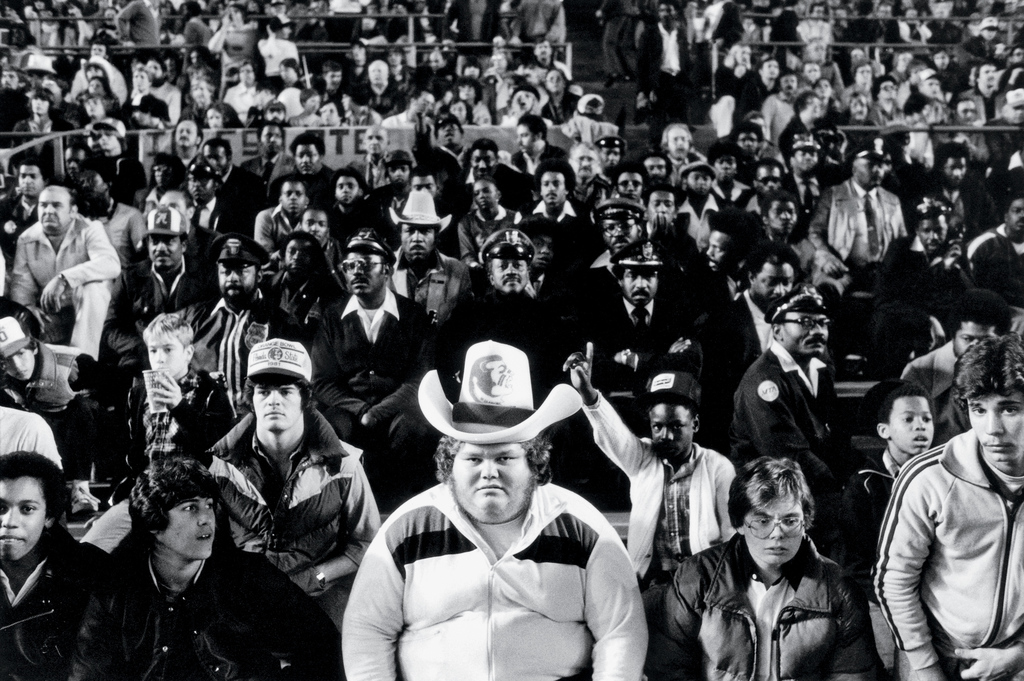
Orange Bowl, Miami, FL, 1981
ct: And this was a personal project?
wi: No. I was doing it for Sports Illustrated for an entire year and they kept loving it and loving it. And by the end of the year, the pictures had gotten so dark that the fan looked like a completely crazed group of people. Guys with guns. I mean, I had a guy with guns on his ankles offering me LSD. I had peeping toms at a soccer game. It’s crazy. And you know, they loved it but by the end—you know the last picture, I went to Yankee Stadium on opening day. Yankee Stadium is a pain in the ass to work in. It’s like working in a penal institution. I’m on the field and the game’s over. And these three young guys, they’re all completely fucking bombed—and I put a camera on one of them. One guys turns his back to me, pulls his pants down and he has this pimpled ass and they’re all laughing. And you know what the cops did? They threw me off the field and let them stay. I got in trouble. It’s always the same in Yankee Stadium.
ct: So I take it you don’t go back to Yankee Stadium very often?
wi: Well I keep having to go back. It’s a lot better than it used to be, actually.
ct: But the story never ran?
wi: The story never ran. The whole year I worked on that story.
ct: Maybe it’s due for a show?
wi: It’s a time capsule for sure. It was thirty years ago.
ct: I also wanted to talk about your music images as well. I mean you have James Brown, The Temptations. Do you want to go into what those images were for?
wi: I was working for Atlantic Records on and off for about four years. My roommate was a photographer in New York and they would hire us to go to concerts that were recording sessions, and also concerts in Central Park in the late ‘60s. They had great acts. Stevie Wonder, Tina Turner, Creedence Clearwater, Roberta Flack—it was a real mixture of great music at the moment. But the crowd got so violent. There would be gunshots, people would throw bottles of beer. People couldn’t get from the outside in. It got so dangerous, these concerts. I worked for different record labels. I worked for King Records where I sold them the cover of James Brown double “Say it Loud, I’m Black and I’m Proud.” It took two years to get paid. And then James Brown came to Montauk. He and Ray Charles came to Montauk, this is an all-time classic about eight years ago
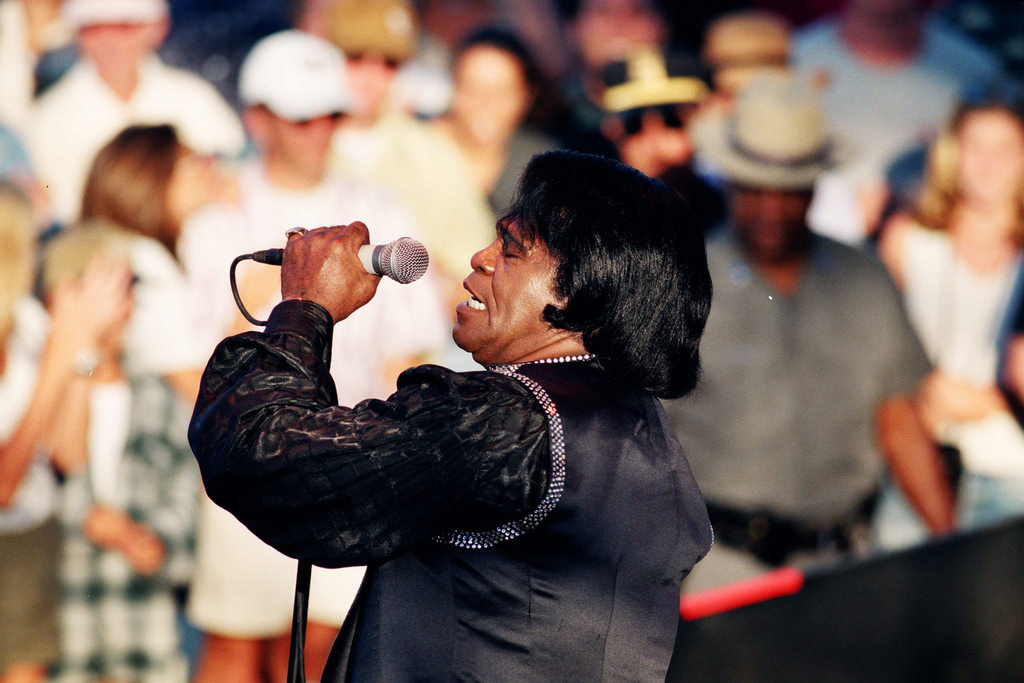
James Brown, Montauk, NY, 1998
ct: So fairly recently.
wi: Yeah. They used to have concerts at The Ranch in Montauk. Paul Simon, Billy Joel, great acts. They brought out Ray and James together. This was an all-timer for me. The Temptations, I’m not sure who I was working for that day, but I know they weren’t happy that I was shooting them. It was one of the guys, I think Melvin Franklin, who was the bass singer, he kept looking at me like he was going to kill me because I was backstage behind the curtain shooting.
ct: All these photos look like they’re from the same era. Do you still dabble in music photography?
wi: No, I don’t do it anymore. That was a four-year run. And it was a mixture of the violence and the drugs and the business. It was a very volatile time. It started to take its toll on me. I wasn’t violent but I certainly was consuming things. And the record business was the most insane place to be for all that stuff. I decided I had to back out of it. I still love music, but it was just too much.
ct: I want to go back to a few other images One of them is a classic Michael Jordan photo, of him jumping in the slam-dunk contest. I really think the notes on that are interesting. Your relationship helped you be in the right place at the right time.
wi: I remember I went in early and set up strobes for Sports Illustrated that day. And the previous year, I had done the slam-dunk contest in Seattle with much more dramatic lighting, so instead of four strobes, I did one strobe lighting the guy and one strobe lighting the background—more theatrical, actually. The problem was that you didn’t see the dunkers face. It was difficult to get the right position. There were a lot of photographers there, so I walk in and Michael is sitting there in one of the front rows under the basket, a few hours before the game. I explained the situation of what took place in Seattle and I asked, “Is there any way you could let me know which way you’re dunking?” He looks at me and says, “Sure.” And I said, “Well, how are you going to do that?” He said, “I’ll put my finger on my knee and I’ll either point right or left.” So I’m on one knee, the slam-dunk contest starts and up comes Michael Jordan. I look over and he puts his finger on his knee. He’s coming from the right side. I move to the left side. So this ballet continues until his last few dunks, which were when he ran from one end of the court to roughly the free-throw line and jammed it. But the first one, I positioned myself dead behind the basket and when he dunked it, he ended up in my lap. So the next time he does it, the dunk that wins the contest, he looks down the court at me and with his fingers motions for me to move left or right. And that was the picture that ran. Every so often, you need a little help from your friends.
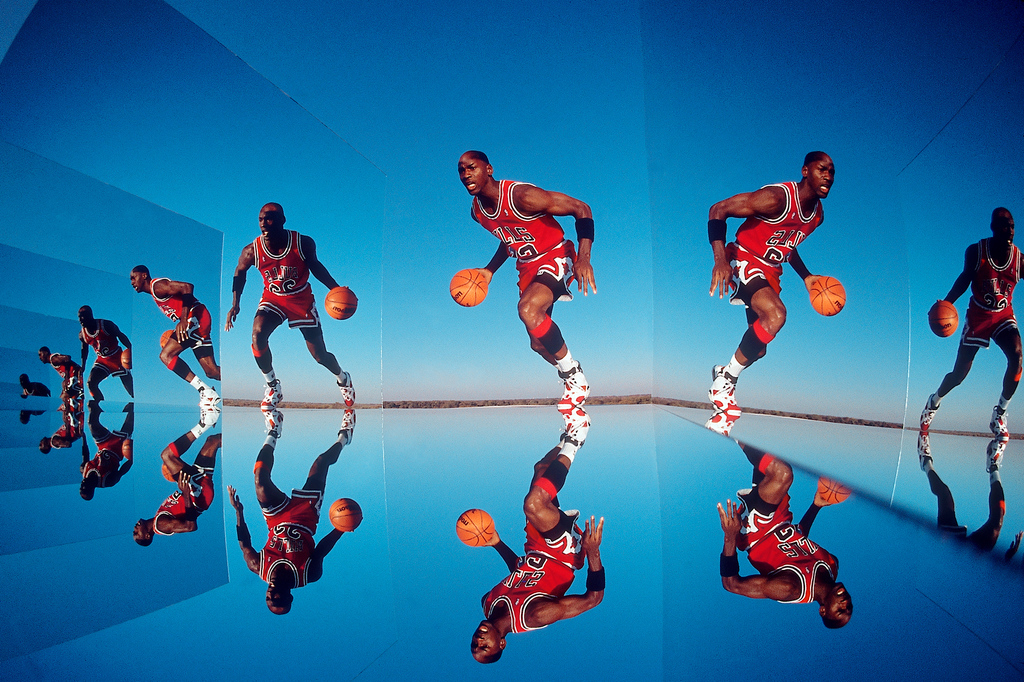
Michael Jordan, Chicago, IL, 1991
ct: It’s such an iconic moment in basketball history. And a great shot. Another Michael Jordan classic is that mirror shot. How did that one happen?
wi: When I was just a kid in East Orange, there was this apartment building next to our house and you’d enter into this big vestibule and there were huge mirrors on the walls as you entered. I was always mesmerized by it. I wasn’t a photographer, but obviously something was registering itself in my brain—that idea of seeing yourself endlessly repeated, to the left and right. And it never really left my mind. So we got a girl, a sprinter, and we put her in a silver tracksuit so she looked like a space woman. And we brought these mirrors. I had never done it before so I got these four-by-eight-foot mirrors; built a platform, got a carpenter. And you could adjust the angle from straight at 90 degrees to down to 45 degrees until you got it where you got that endless progression of reflections. It was a good picture, but once again, if you got Michael, it would be a better picture. So I had these mirrors set up in a parking lot near where I live now and he didn’t show up. It was the only time he ever deceived me about a shoot. But then one day we did it outside of Chicago on this rooftop, it was a crystal-clear day. Not a cloud. He loves that picture.
ct: Who was it for?
wi: Sports Illustrated.
ct: Can you speak about how you first got involved with the Sports Illustrated Swimsuit Issue?
wi: Well, the original editor, Julie Campbell, liked hiring non-fashion photographers. She took me on a couple of assignments for some fashion thing they were doing in the magazine back then—a rodeo star in some clothes or something. The next thing I knew, I was in the Bahamas and Acapulco on the swimsuit issue in 1972.
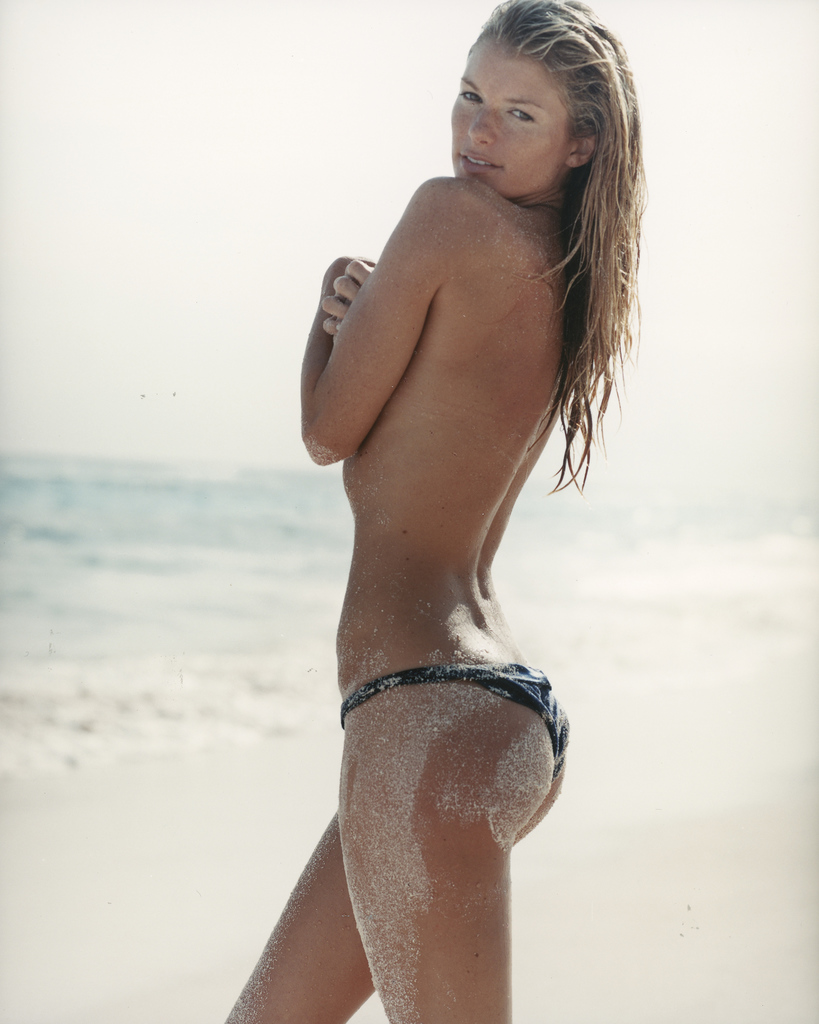
Marisa Miller, Bahamas, 2005
ct: Were you surprised by the response to the magazine, or did you see it coming?
wi: You have to understand that issue was so much smaller in 1973 than it is today. It was eight pages, with four pages of travel. It was nothing. I don’t remember any magical reaction. It was more magical to be me and to be surrounded by these women. I remember going to this little island with Barbaro, a big Norwegian blonde, Julie Campbell, the editor—who is a very good-looking woman—and my future wife, who was also beautiful. You know, a guy walks into a bar with three hot women and everyone thinks, what an asshole. Yeah. I remember looking in the mirror and seeing this scene. I couldn’t even believe it. It was insane. I was 29.
ct: The perfect age.
wi: Oh my God. I mean, you’re out of your mind. It’s not an easy thing to deal with. It got much bigger the last ten or fifteen years, after Cheryl Tiegs and Christie Brinkley changed the landscape. And then it became this iconic thing the athletes want to talk about that more than anything I have ever done in sports. It’s probably the greatest calling card I’ve had to communicate with athletes. It’s something they know about me already and they are all horny. It’s always the same. I have used this to my own advantage because I can disarm people with these pictures. I have a 28-year-old athlete there, they’re dying to look at those pictures. It’s only human nature.
ct: How long did the shoots last?
wi: It used to be longer than it is today. You would go out for three weeks or a month. I tell you what—it was a grueling trip, any trip that long. Something happens on shoots. I’m a firm believer in that. People start to get a little wacky. It’s almost a rule. It’s like a full moon or a high or low tide. If you’re ten days into a trip with the crew starts to lose their focus, especially now with cellphones and tweeting and everything. I turn around and absolutely no one is doing anything except doing their own videos, taking pictures of each other, tweeting, facebooking.
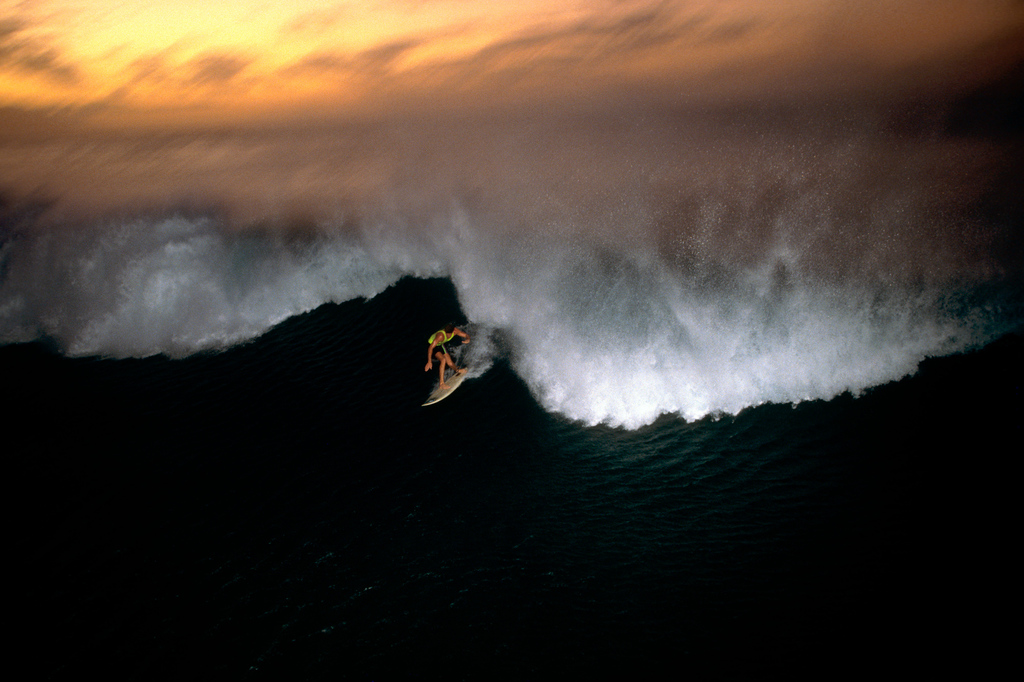
Pipeline, Oahu, HI, 1990
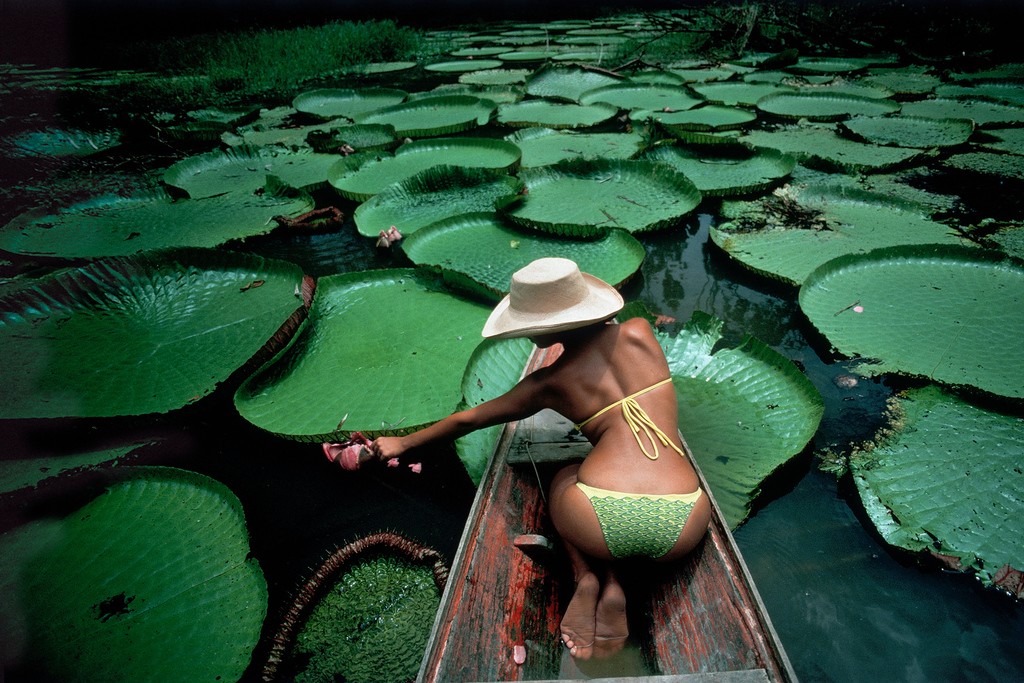
The Amazon, 1997
ct: So a big part of it is keeping everyone together?
wi: After a certain point, you have to. And you have to finish strong. Because the last person who comes in gets a little shafted because they have been there for two, two-and-a-half weeks. I mean, you think it never gets boring, but it’s very difficult shooting a girl on a beach. It’s as hard for them as it is for us. It’s a very difficult shot. I mean, just imagine yourself writhing on a sandy beach with nothing.
ct: You have to get creative.
wi: Sure, good things happen. Light happens. That’s where great models take over. That’s what good models do. They make something out of nothing. They can turn anything into the most perfect photograph.
ct: Do you have a favorite? Or is that unfair to say?
wi: I’ve got a group of favorites but you also have different categories, too. But I’m not really going to go there. There’s who is the most beautiful girl, who are the best posers, who are the most fun. There are a lot of categories you could go to. I mean, Petra Nemcova was, to me, as beautiful a girl you’d like to see. Christie in her day was just breathtaking. We’d bring her in last just to revive the troops. It’s true. It would work because she was like a thousand-watt bulb. All the ones you know are the ones who are very good. Veronika Verekova—there are so many good ones out there.
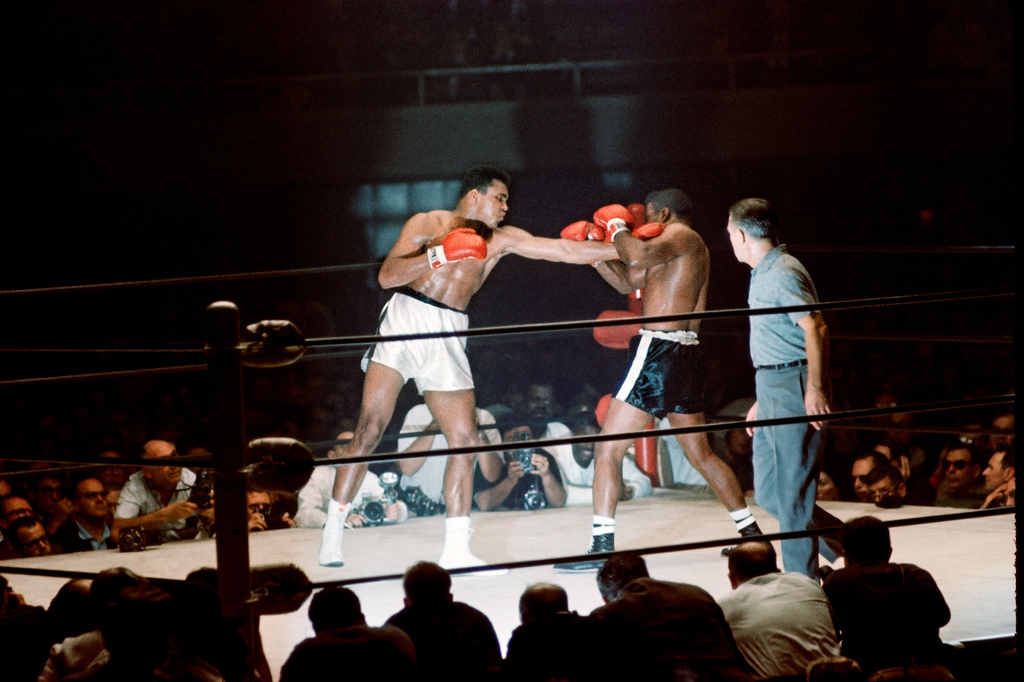
Ali vs. Patterson, Las Vegas, NV, 1965
ct: Do you ever get contacted to send photos back to the models? I’m sure they have fond memories of the trips, and it can be a big, career-defining moment for them as well.
wi: Sure. For the cover girl, it’s a gigantic career changer. Money-wise, for contracts, even the girls on the inside, it changes everything. Whether for good or bad. Sometimes it can define your career. Sports Illustrated swimsuit girl. Not everyone wants the vibe of that thing; they might want a broader career. They still call Christie Brinkley a Sports Illustrated cover girl.
ct: Do you have a favorite image from your career?
wi: You know, there are different types of pictures. There is a decisive moment when something happens for a millisecond in front of you and it’s never going to happen again. It’s perfect. And then there are conceptual pictures, like the blue duck. The kids in Cuba, playing stickball, to me is my perfect decisive moment. It was under a roll of film I shot it with a normal lens and some bad pelts of film. I just pulled it out of a bag. That, and another very popular one is the Ali-Frasier portrait. Every photographer I trade with seems to take that one.
I’ve traded four pictures since I’ve been in Florida and they have all taken that picture.
ct: And that is the black and white one?
wi: Sepia. It was a giant 20-by-24-inch Polaroid.
ct: Wow. That’s a big camera to lug in there.
wi: You have someone who lugs it in. You just aim it, look through the finder and shoot. It is the greatest camera to shoot someone with. You get an immediate emotional attachment with them. I’ve shot a lot of families and their children with this camera. I’ve shot my own grandson, my own family. On three different occasions, I have had mothers start to cry when they see the picture. You know, they just saw it taken, only a minute and a half ago. But it’s like seeing yourself on the big screen. Something happens. It’s like the camera catches your soul.■
